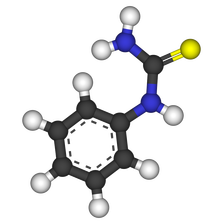|
Our exploration of Genetics is in full swing and today students used PTC paper to test whether they are a supertaster or not. PTC (Phenylthiocarbamide) is a chemical that tastes really bitter to some people (supertasters) kind of bitter to others (medium-tasters) and has no taste to some (non-tasters). Your ability to taste PTC is reliant on a single gene. If you have two copies of that gene you are a super taster, only one copy means you are a medium-taster, and no copies means you are a non-taster.
0 Comments
Leave a Reply. |
AuthorMr. Powell is a High School Science Teacher in Western Colorado. Archives
May 2024
Categories
All
|


 RSS Feed
RSS Feed